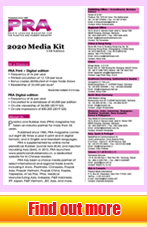PS recycling: VTT’s MoPo project for reuse of PS waste in Europe; Amsty/Ineos/Trinseo cooperate on PS recycling

The global polystyrene (PS) market was worth some EUR36 billion last year, and the market is expected to grow by 10% per year during the next few years. At the same time, there’s a need to reduce the use of fossil raw materials, such as crude oil. This is why recycling of the crude-oil-based PS will inevitably become increasingly important.
The bulk of collected EPS and other polystyrene (PS) waste still ends up incinerated. State-owned and non-profit VTT Technical Research Centre of Finland with its partners will explore in their two-year MoPo (monomers from end-of-life polymers) project how recycling of PS could be substantially increased by reshaping its collection and handling. The goal is to convert waste into pure PS or styrene monomers used in other plastics and chemicals.
PS is typically used in its hard form in containers, such as yoghurt pots, and as a foam known as EPS (Expandable Polystyrene) when insulating or damping properties are needed. Both types can be mechanically recycled, which means they can be moulded into new polystyrene products by melting the material. The amount of collected PS waste is, however, quite small in Finland, so it usually ends up incinerated. The collection of EPS is especially challenging, as EPS takes up a lot of space for its weight and crumbles and stains easily.
As not all PS waste is suited for mechanical recycling, thermochemical recycling methods will be developed in the MoPo project as well. In thermochemical recycling PS is pyrolyzed, i.e., heated in the absence of oxygen, and thus disintegrated into shorter polymer chains and even to styrene monomers. The resulting pyrolysis oil, upon purification, can replace oil fractions when producing for example aromatics, latex, PS and carbon black. A method will also be developed to allow safe utilisation of PS waste containing flame retardants and other hazardous components.
The MoPo project led by VTT has a total budget of EUR964 000, which will be covered by Business Finland, VTT and research and business partners: Aalto University, L&T, HSY, Finnfoam, PS Processing, CH-Polymers, Pohjanmaan Hyötyjätekuljetus and Suomen Uusiomuovi.
During the project, participants will demonstrate various processes such as separate collection of PS waste, handling of PS waste with a new kind of extruder developed at VTT, and mechanical and chemical recycling of PS waste.

Elsewhere, in related news, to accelerate driving the circular economy for styrenics forward, three of the world’s PS producers, AmSty, Ineos Styrolution and Trinseo have signed an agreement to jointly explore recycling options for PS.
The agreement represents the first global combined effort to explore advanced recycling technologies, optimise them for commercial use and call for all contributors along the value chain to make circularity of PS a reality. The three companies say they are aiming at an economy where post-consumer PS waste does not end up in landfills but is recognised as a valuable resource for the development of new materials for future use.
All three companies have done their own independent research and have invested in various projects to further the commercialisation of advanced recycling capacity. This new joint effort allows all participants to share best practices and optimise recycling technologies for large-scale commercial use.
(PRA)
Subscribe to Get the Latest Updates from PRA Please click here
©2020 Plastics and Rubber Asia. All rights reserved.

©2020 Plastics and Rubber Asia. All rights reserved.
Home Terms & Conditions Privacy Policy Webmail Site Map About Us






















